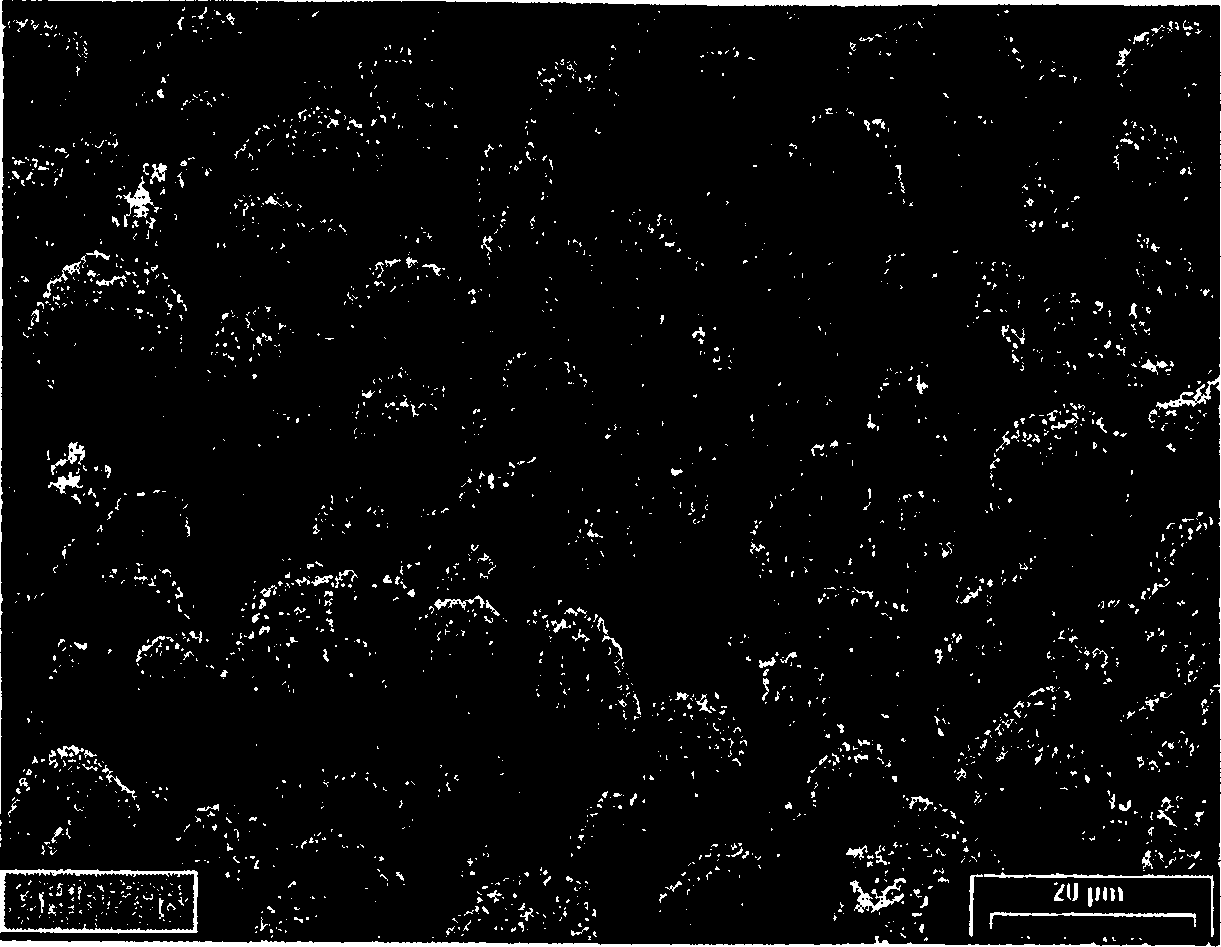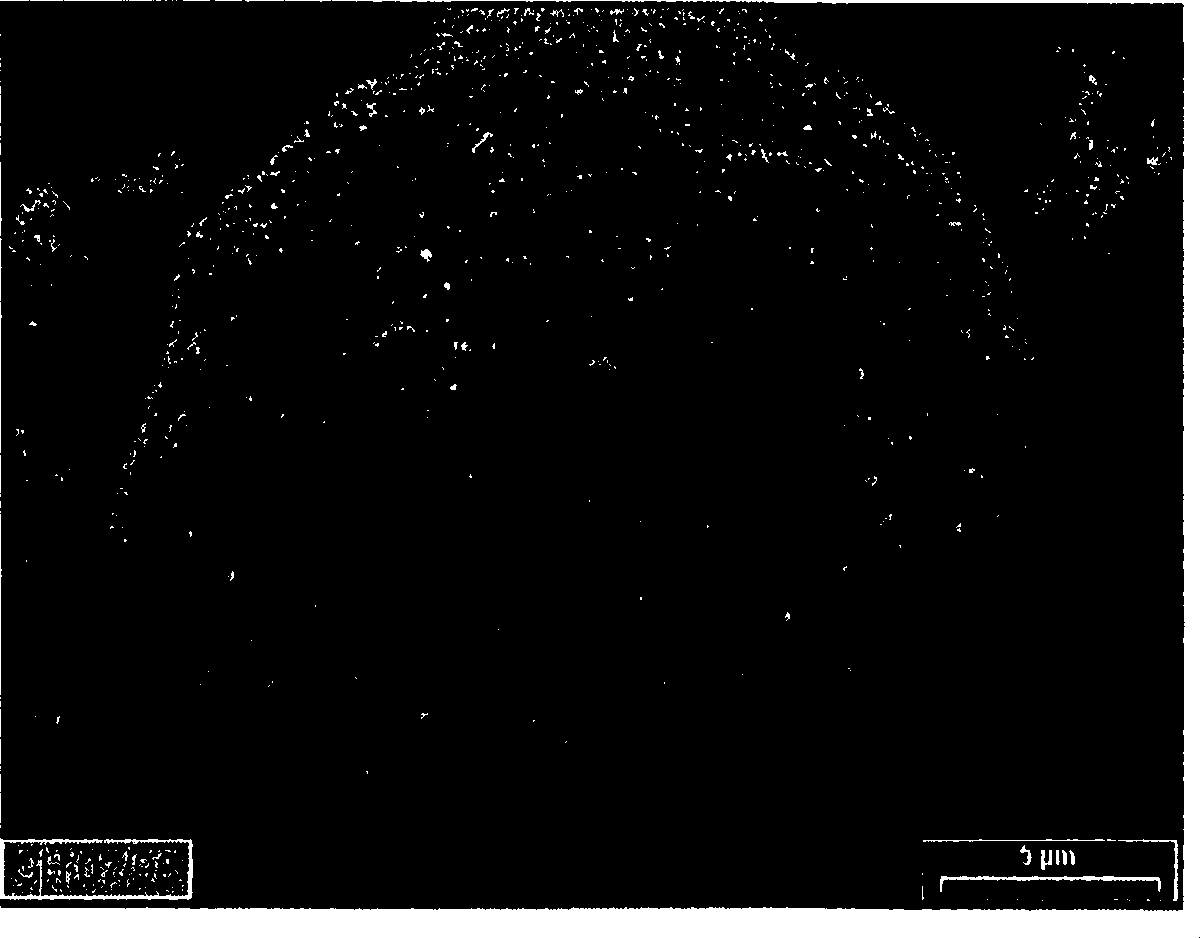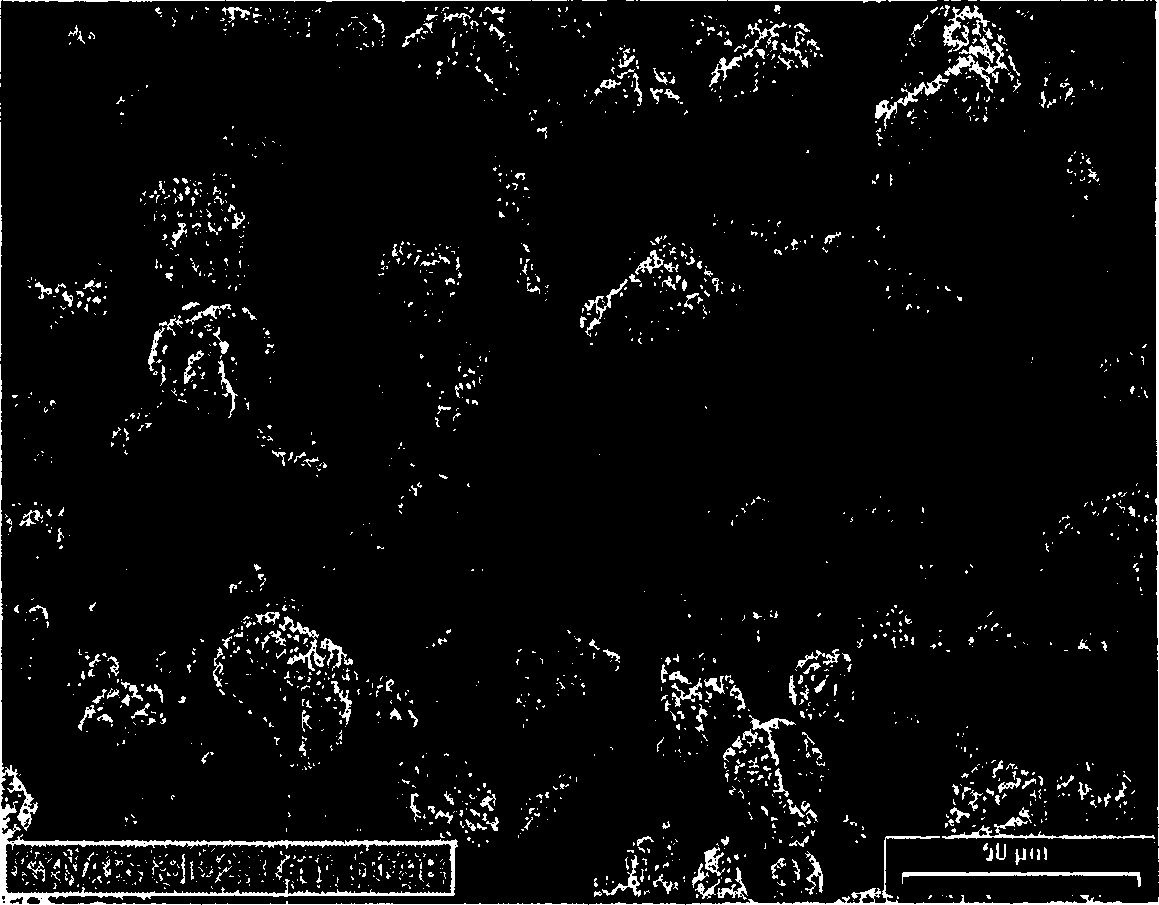Lithium iron cell element produced by using microcomposite powder
A lithium-ion battery, composite powder technology, applied in electrical components, battery pack parts, secondary batteries, etc., can solve the problem of insufficient mixing of fillers and fluoropolymers
- Summary
- Abstract
- Description
- Claims
- Application Information
AI Technical Summary
Problems solved by technology
Method used
Image
Examples
Embodiment
[0086] Use the following products:
[0087] No. 1 PVDF latex is the homopolymer latex of VF2, obtains by emulsion polymerization, is characterized in that dry extract is 35% by weight (uses the HG53 type instrument of Mettler Toledo company, latex adopts weighing measurement after 160 ℃ of drying 10 minutes residue), and an average particle size of 140 nm (determined by laser diffraction using a Coulter trade mark particle sizer). The resulting PVDF is characterized in 100 sec -1 It has a melt viscosity of 1200 Pa·s at 230°C under shear, a melting point of 171°C (measured according to ISO 3146 standard) and a tensile modulus of 2200 MPa at 23°C (measured according to ISO 527 standard). PVDF density is 1.78 (measured according to ISO 1183).
[0088] PVDF Latex No. 2 is a copolymer latex of VF2 / HFP (10% by weight HFP), obtained by emulsion polymerization, characterized by a dry extract of 31% by weight and an average particle size of 230 nm. This PVDF is characterized at 100 ...
Embodiment 2
[0097] Embodiment 2: preparation is the composite powder of main component with PVDF latex, graphite and carbon black: in the disperser identical with aforementioned, and wherein the graphite of embodiment 1 and carbon black homogeneous dispersion (slurry) are housed, Gradually add No. 1 PVDF latex under proper stirring (300 revs / min), and its ratio is such that graphite+carbon black dry weight ratio is 86% in graphite+carbon black+PVDF total amount. Demineralized water was also added gradually to maintain a total dry extract weight of 20% in the slurry and latex mixture.
[0098] This kept stirred liquid mixture was atomized with a Minor Mobile atomizer (produced by NIRO) under the following conditions:
[0099] The hourly flow rate of the mixture = 2 liters / hour
[0100] The inlet temperature of hot air reaching the turbine = 175°C
[0101] ·Outlet temperature measured at the air outlet = 55°C
[0102] • Air pressure for specified turbine speed = 2.2 bar. The resulting m...
Embodiment 3
[0103] Embodiment 3: The composite powder of embodiment 2 is processed by dusting+calendering
[0104] The copper spool is loaded on the mounting head, and the copper foil is uncoiled and passed through the intermediate roller. The unwinding speed maintained was 1.2 m / min. The composite powder of example 2 was deposited by triboelectric action (by means of a powder gun) in a homogeneous layer (the thickness of this layer depends on the desired final thickness after calendering). The copper foil was heated to about 200°C with an infrared light source in order to promote coalescence of the homogeneous layer and its adhesion to the copper foil. A second infrared light source is installed downstream of the powder gun to heat the top surface of the homogeneous layer.
[0105] The entire copper foil, covered by a uniform layer, then passes through a calender system between rubber rolls and conditioned metal rolls (heated or cooled). This system, which now constitutes the electrod...
PUM
| Property | Measurement | Unit |
|---|---|---|
| size | aaaaa | aaaaa |
| diameter | aaaaa | aaaaa |
| particle size | aaaaa | aaaaa |
Abstract
Description
Claims
Application Information
 Login to View More
Login to View More - R&D Engineer
- R&D Manager
- IP Professional
- Industry Leading Data Capabilities
- Powerful AI technology
- Patent DNA Extraction
Browse by: Latest US Patents, China's latest patents, Technical Efficacy Thesaurus, Application Domain, Technology Topic, Popular Technical Reports.
© 2024 PatSnap. All rights reserved.Legal|Privacy policy|Modern Slavery Act Transparency Statement|Sitemap|About US| Contact US: help@patsnap.com










